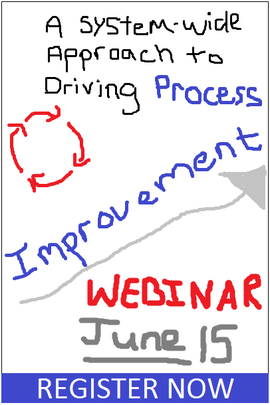Here at KaiNexus, we love technology. Or, at the very least, we are OK with technology. I have to tell you story, though, about a recent technology failure that I saw when speaking at a conference.
Before I get into that, I'd like to elaborate that the KaiNexus team is passionate about helping people and organizations spread continuous improvement. We're probably more passionate about that than anything else. The technology exists to further that goal. Technology is a means to an end. We also believe that technology is only part of the overall solution...you also need leadership and a good methodology to make the best of technology.
Personally, I ascribe to the Toyota and Lean view of technology. Point #8 of "The Toyota Way" methodology says:
“Use only reliable, thoroughly-tested technology that serves your people and process.”
After being on the market for four years, KaiNexus is undoubtedly a reliable, thoroughly-tested technology. Even when we first launched, our approach and technology had been used in an earlier form at Vanderbilt University Medical Center.
Our technology solves a clear, key problem. Sometimes, people manage continuous improvement using simple, analog methods like sticky notes and bulletin boards. That can work in a local team, but the visibility is very limited. It's hard to share ideas across departments or sites without some sort of electronic solution. There's a problem to be solved with technology.
Now, let's think about the typical coffee set up in meeting rooms or at conferences. Generally, the big urns full of hot beverage are labeled as "Coffee," "Decaf," and "Hot Water." Nobody wants to make green tea with coffee instead of water. I don't want to accidentally drink decaf.
Usually, these are labeled with some sort of paper sign. It might be hanging on the urn or in a nice looking little picture frame. Either way, the label can be simple and analog... and it works... it helps.
At this one recent meeting, somebody decided to get fancy. Instead of the picture frames with paper, they used small digital picture frames to display those labels, as pictured below:

My first thought was, "Wow, that's a technology solution chasing a problem."
Being a bit of a cynic -- or, drawing on my engineering education -- I then thought, "There's so many things that could go wrong with those frames..."
Paper signs don't require batteries. They don't fail. Digital signs might.
And, sure enough, by the time of the morning's break time... one of the signs was out!

I checked that middle frame that was out... I pressed the power button.... nothing happened. It seemed like the battery was dead.
Sometimes, things like this happen when we choose a technology that isn't reliable and tested...or if it doesn't serve the people and processes. Maybe somebody thought the digital signs would save paper since they are re-used. But, you can re-use paper signs, especially if they are in a physical frame. Maybe they thought the digital frames are more flexible since they can be reprogrammed to display different food names (the breakfast food items also had these digital signs).
Either way, if they are going to use the digital signs, they probably need to build a better process that ensures they are fully charged at the start of the day!
Have you seen examples of technology not being helpful in your workplaces? Please share a story by posting a comment below.



Add a Comment